In its quest for harmony with nature we at Blucap interiors, as biophilic interior design integrate acoustic, sound-absorbing solutions such as moss walls and eco flooring panels which reduce ambient noise while adding a natural aesthetic into a space. The soothing sounds and scents of nature help create a comfortable, reassuring environment.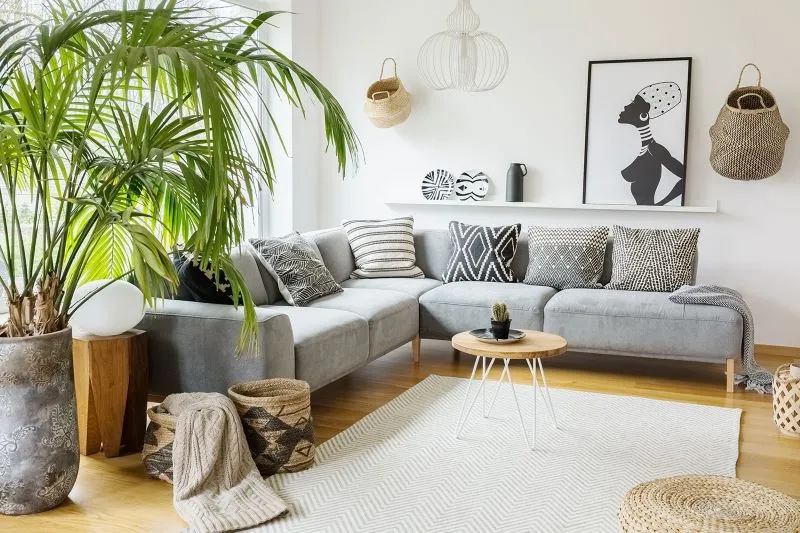
Pygmy Date Palm
The Pygmy Date Palm is an easy to care for plant which displays very narrow (compared to other palms) arching leaflets. This feather type species (P.roebelenii) is a slow growing ornamental palm that's well adapted to growing indoors, unlike other phoenix plants from this genus. Indoors they grow up to approximately 4 - 6ft which is quite a manageable size for most homes.As mentioned above the Pygmy palm has very slim feather type leaflets that arch over. The only other palm I know of that has slimmer leaves is the dwarf coconut type, while others are much wider and can look more attractive indoors.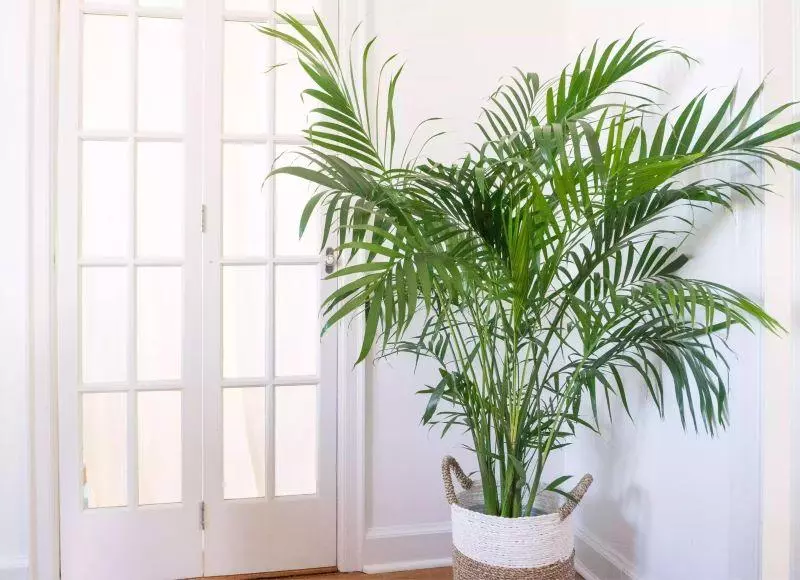
The trunk is an attractive feature that grows up to 6 inches in diameter, and brown in color. Outdoors these only grow up to 6 - 10ft, so they're a manageable height indoors and outside (in the correct conditions). These are suitable to be grown and displayed in greenhouses, conservatories or any room that has enough bright light.The pygmy palms may do well as a container specimen on a deck or patio during the summer months in the Midwest, but will need to be overwintered indoors before the first frost.
Boston Fern
Boston Fern is an incredibly popular houseplant that belongs to the species of fern in the family Lomariopsidaceae native to tropical regions throughout the world. It is an evergreen perennial herbaceous plant that can reach up to a height of 16-35 inches. The Boston Fern plant is known for its lush foliage and feathery ferns which are best displayed when hanging.Boston Ferns can grow well both in indoor and outdoor conditions. Apart from enhancing the aesthetics, they are also useful in removing harmful air pollutants from the environment.It’s important to maintain stable growing conditions for Boston ferns, as any element to their care that’s out of whack can quickly damage the plant.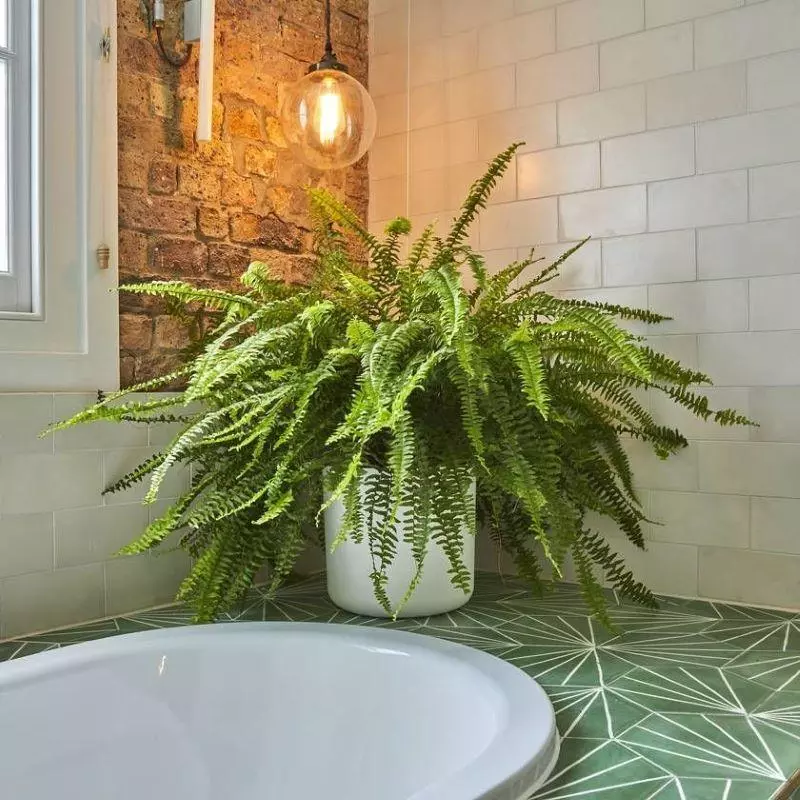
Plan to water frequently to prevent the soil from drying out. And fertilize from spring to fall when the plant is actively growing. Regularly misting your fern or using other means to raise humidity also is typically a must unless you live in a very humid climate. While pruning typically isn't a major chore, you should remove dead fronds as needed to keep the plant looking attractive. Overall, these plants don't have any major pest or disease problems as long as their growing conditions are met.
- Light - Boston ferns do best in bright, indirect light. Too much shade can result in sparse fronds that aren’t their typical bright color. And too much sun can burn the fronds. So both outdoors and indoors, make sure direct sunlight won’t hit your plant.
- Soil - These ferns like organically rich, loamy soil with good drainage. Poorly drained soil can cause root rot and ultimately kill the plant. For container Boston fern plants, use a peat-based potting mix.
- Water - To successfully grow Boston ferns, it is key to keep the soil lightly moist (but not soggy) at all times. If the soil begins to dry out, the fern’s foliage can quickly dry out and drop off the plant. During the fall and winter months, slightly reduce watering, as the plant is not actively growing. But if you notice the fronds getting dry, increase the amount of water you are giving the plant.
- Temperature - Boston ferns prefer mild temperatures between roughly 65- and 75-degrees Fahrenheit. They can’t tolerate either extreme heat or extreme cold. Temperatures above 95 degrees Fahrenheit can harm them, as can temperatures below 35 degrees Fahrenheit.
- Humidity - High humidity also is critical for Boston ferns. They thrive in humidity levels of above 80 percent. To raise the humidity around your fern, set it on a tray filled with water and pebbles. Also, regularly mist the plant. If it’s not getting enough humidity, the tips of the fronds will begin to turn brown, which can eventually overtake the whole frond (and plant) if the humidity doesn’t increase.
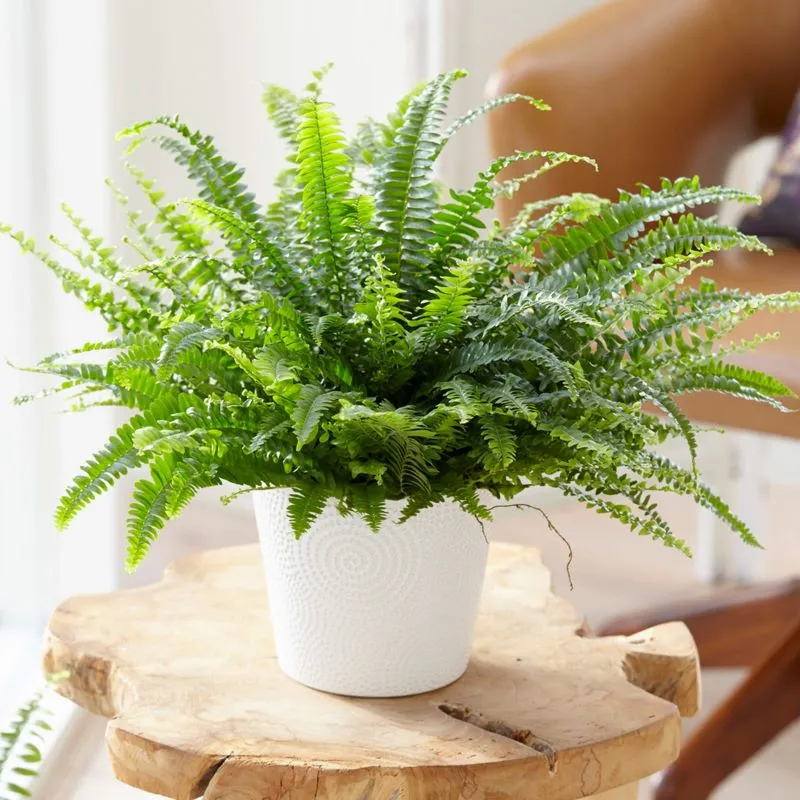
Boston ferns will grow as large as the pot allows. Many Boston ferns are sold as hanging baskets in plastic pots, and it’s fine to leave them that way if desired. If you want to plant your Boston fern in different container, though, choose plastic or glazed terra cotta. These types of pots take longer to dry out, making it easier to maintain the plants. It can be difficult to keep a large Boston fern well-watered enough when it is growing in coco coir or an unglazed container, unglazed pot, window box, or hanging basket.
Kimberly Queen Ferns
Kimberly Queen Ferns make a bold statement. Their dynamic and graceful leaves fill any space with gorgeous, natural color. Kimberly Queen Ferns are easy-to-grow and thrive outdoors or as a houseplant. Learn more about these fantastic plants and how to take care of them here!Bring the vibrance of nature home when you decorate with Kimberly Queen Fern plants. When grown indoors, make sure your plant receives medium light throughout the day. Place in front of a north facing window for example to provide your plant with enough light to grow well, but not so much that the leaves lose their vibrant green color.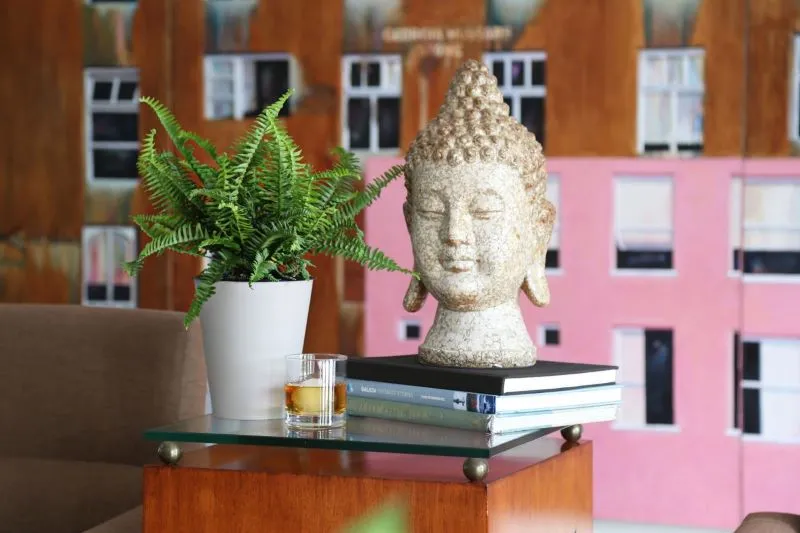
Watering is important when taking care of your Kimberly Queen Ferns indoors. Allow the top few inches or 25% of your potting soil to dry out before watering again. The leaves may even turn a pale green color when your plant is thirsty. When the fronds turn crispy or brown, that means you could be overwatering. Know exactly how much water your plant needs and help making watering even easier. Keep in mind that when the soil goes from bone-dry to saturated, it can cause stress for your Kimberly Queen Fern and may cause leaves to drop. Give it some time to adjust.
- Not enough humidity - In the wild, ferns grow on the moist forest floor. They will do best in a very humid environment, such as a bathroom or kitchen. Here are some ways you can increase humidity for your Kimberly Queen:
- Mist - One of the easiest ways to bring a boost of humidity to the plant’s surrounding environment is by misting its leaves with filtered or distilled water. Depending on how dry your environment is, you may need to mist several times a day.
- Make some pebble trays - Pebble trays are another easy DIY solution to increase humidity around a plant. You don’t want a plant’s roots sitting in water, so to prevent that from happening, add clean pebbles in a shallow water-filled tray. The water level should not be above the pebbles. Place the plant on top of the tray. The water will gradually evaporate around the plant, boosting humidity.
- Get a humidifier - Humidifiers can be a benefit to both people and plants during the winter months. While heaters and fireplaces can dry out a living space, a humidifier adds much-needed moisture to the air. Always follow the instructions regarding where to place it in your home.
- Give your plants a shower - Give your high humidity-loving plants a lukewarm shower for 30 seconds. Not only does this increase humidity, but it also rinses off any dust or debris, and discourages pests from taking up residency.
Spider Plant
The spider plant (Chlorophytum comosum) is considered one of the most adaptable of houseplants and the easiest to grow. This plant can grow in a wide range of conditions and suffers from few problems, other than brown tips. The spider plant is so named because of its spider-like plants, or spiderettes, which dangle down from the mother plant like spiders on a web. Available in green or variegated varieties, these spiderettes often start out as small white flowers.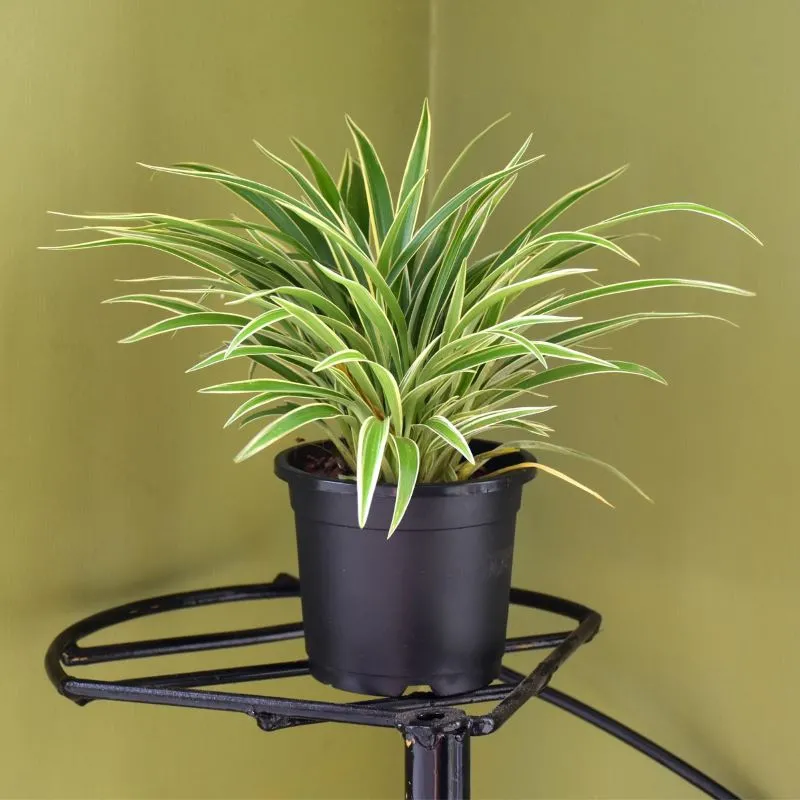
The Spider plant is among the most adaptable houseplants, and is very easy to grow. A graceful plant that makes a statement anywhere—from a tabletop to a mantle, or with its lovely arching leaves as a hanging plant. The Spider Plant is also known for its tremendous air purifying qualities, making it a healthy addition to your home as well.
- Light - Your Spider Plant will tolerate lower light conditions, however, they prefer bright indirect light where they will flourish. The striping on the leaves will be more prominent with indirect lighting. Avoid direct sunlight as it will scorch the leaves.
- Water - Water your Spider Plant when the top 50% of the soil is dry. Water until liquid flows through the drainage hole at the bottom of the pot and discard any water that has accumulated in the saucer. If you notice browning leaf tips, it can be from chemicals found in water, which cause build-up. If this is the case, allow the water to sit out overnight before watering or use filtered water.
- Humidity - Your Spider Plant will do well in low humidity environments but will thrive with a bit more humidity. Brown leaf tips may indicate the air is too dry, so mist your Spider Plant regularly.
- Temperature - Your plant prefers temperatures between 60-80 degrees during the day and above 55 degrees at night.
Indoors or out, spider plant looks great in a hanging basket, or placed on a table where its long shoots with the plant “babies” on the ends make an eye-catching display.
Chinese Evergreen
The Chinese evergreen (Aglaonema vittata) is a leafy, green plant that thrives in tropical forests or other areas of high humidity, partial light, and moist soil. A common houseplant, the Chinese evergreen flourishes in shady gardens or near humid areas of a home such as a kitchen or bath.There are many hybrid varieties of the Chinese evergreen available which have been cultivated over the last century. This is because of their increasing popularity for indoor growers to use them as ornamental plants for room decoration.These slow growing plant varieties includes, plain green, speckled, blotched and variegated types. One of the most popular and sought after is the silver queen which has leaves covered in silver mainly with some small green patches.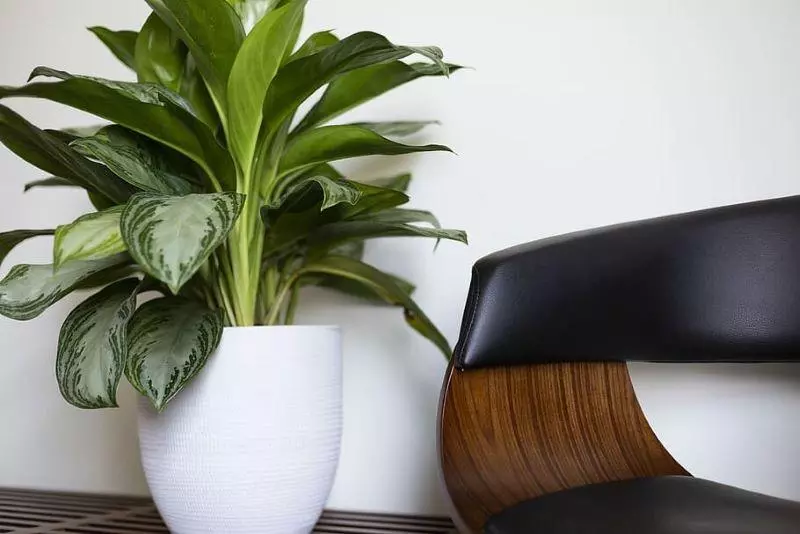
Light - As a tropical forest plant, most varieties of Aglaonema thrive best in filtered light to partial shade but never direct sunlight. Chinese evergreens perform very well as houseplants or grown out of doors in a shady bed in frost-free areas.
Water - Chinese evergreens require an evenly moist soil environment and high humidity. Aglaonema cannot tolerate dry air. Water the plant until the soil is moderately moist. Allow a bit of drying out between watering as heavy or excessive watering may lead to fungal problems such as stem or root rot. If watering with common tap water, allow the open container to sit for a few minutes to allow any chlorine to evaporate.
Propagation & Potting - Propagate Chinese evergreens by separating basal shoots with 3-4 leaves and preferably attached root growth. Other options include propagating by division in the spring or the fairly difficult option of tip cutting with bottom heat. Cuttings may be rooted in soil or water year-round.
Bamboo Palm
The bamboo palm is the perfect plant to combine ease of care, a pop of color, and a healthy dash of style in a neglected corner of your apartment. That’s why we’re breaking down everything you need to know about the bamboo palm, from characteristics to uses to how to care for it. It’s also a rare tropical delight in that, unlike many of its warm-weather cousins, it can actually thrive in lower light. Most tropical plants actually need bright light in order to live, however, the bamboo palm is happiest in low and indirect light.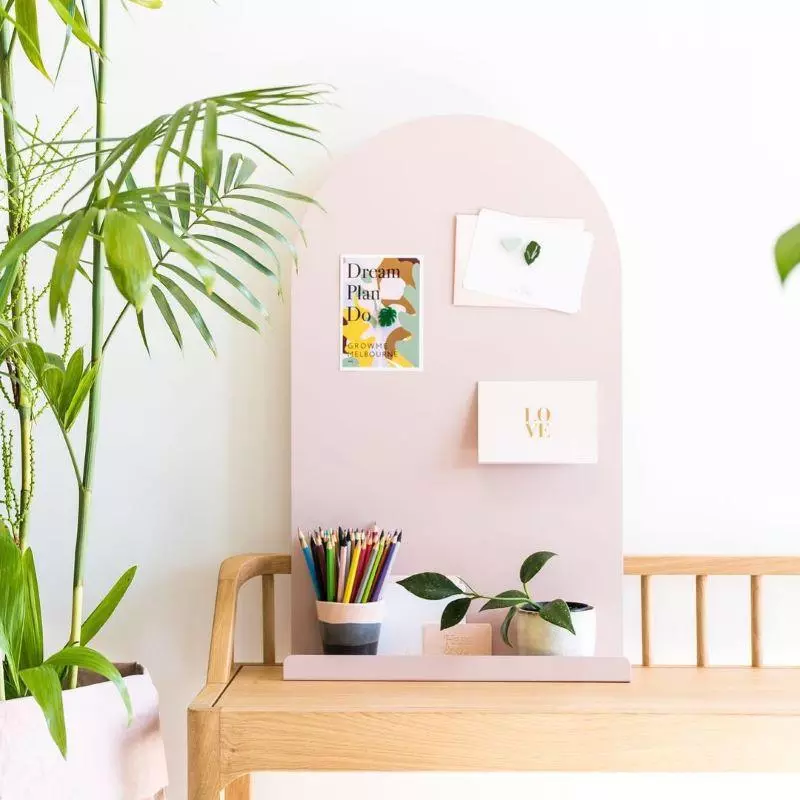
Bamboo palms are popular houseplants because they are low-maintenance and they do well in a variety of lighting conditions. They do require consistent moisture, so if you tend to under-water your plants you may want to skip this palm.
- Light - Bamboo palms are the perfect tropical plant for medium to low-light conditions. Unlike other palms, they do not require bright light in order to thrive. They do well in a variety of light conditions ranging from low light to bright light, and can even tolerate being placed in north-facing windows. Avoid hot, direct sunlight as it will burn their delicate leaves.
- Soil - Moist but well-draining soil is best for bamboo palms. Soil that is porous but humus-rich is ideal. Amending standard potting soil with peat moss, orchid bark, and perlite is a great DIY soil mix for bamboo palms.
- Water - The soil of bamboo palms should be kept evenly moist, but never waterlogged. Bamboo palms are sensitive to both overwatering and under-watering, but it is always best to under-water rather than overwater. Allow the top of the soil to dry slightly between watering.
- Temperature and Humidity - These tropical palms enjoy warm temperatures and humid environments. They are not frost-tolerant. Bamboo palms do well in typical household temperature and humidity levels but appreciate extra humidity where possible. Placing your palm near a humidifier or on a pebble tray will help to increase the humidity around the plant.
- Potting and Repotting Bamboo Palms - Bamboo palms should be repotted once they have outgrown their previous container. They tend to be slow-growing so you should not need to repot them too often. Keep in mind that the plant will grow as large as the pot you give it—so if you want to keep your bamboo palm small, don’t increase the pot size very much when you repot. This will help to control the size of the palm.
Weeping Fig
Weeping fig (also known as the ficus tree) grows as a large broadleaf evergreen tree in tropical and subtropical climates, but it is more often grown as a houseplant in homes, offices, and featured in interior commercial landscaping.This elegant plant has slender branches that arch gracefully from a light gray trunk, with dense, glossy dark leaves. When grown indoors, the plants are normally pruned to keep them about 3 feet to 6 feet tall, and their trunks are sometimes braided for decorative appeal. It is a fast grower and may need to be repotted up to once per year, but do so in the early spring for best results. 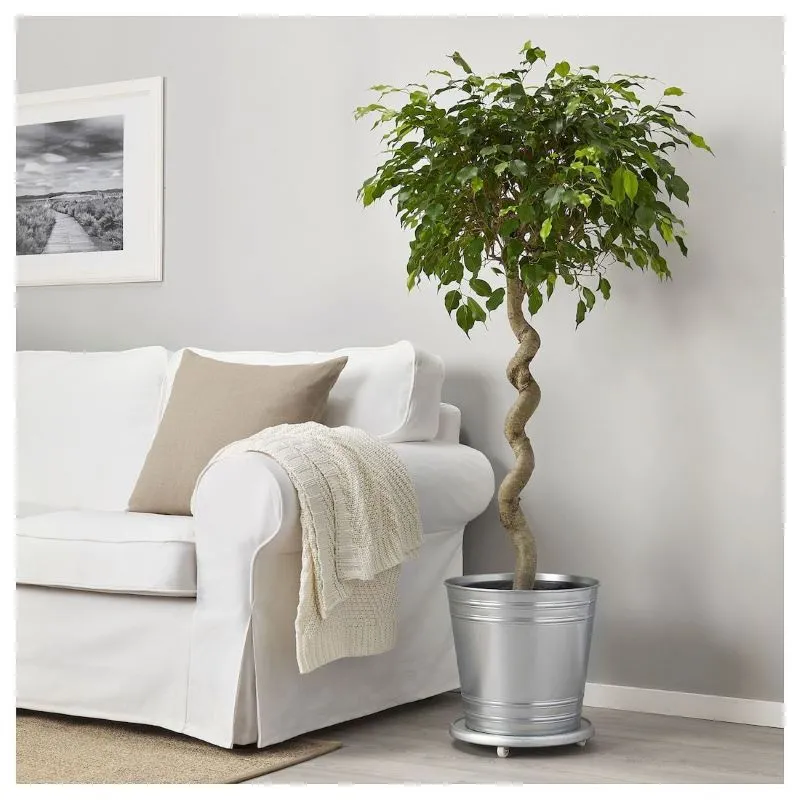
- Light - Your Ficus will need a location which is fairly bright in order for it to do well indoors. Some shade is okay, but you do have to be careful as if the light levels are too low then in a short time your Weeping Fig will tell you it's unhappy by shedding leaves. Some direct sunshine will be fine, but midday sun could be too much for your plant, so early morning or late afternoon sunshine is best.
- Watering - Most Ficus plants are normally tolerant of occasional watering mistakes, so giving too much or too little from time to time will not usually do any long-term harm.For a thriving happy plant, you will want to get it right though and that means keeping the soil moist for much of the time. In other words, the potting soil shouldn't be a soaking, sodden mess and equally, it shouldn't resemble bone dried dust.
- Humidity - The humidity in your home or office isn't overly important. Insufficient watering will mean the humidity needs to be higher and too much watering will mean low humidity levels are needed to decrease the chances of your plant rotting.
- Temperature - The average temperature in the standard home or office is brilliant. If you're comfortable temperature wise, then so is your Ficus. For active growth to occur the temperature needs to be at or above 15°C (59°F). Always keep your plant out of cold draughts.
Repotting - Very young plants need to be repotted every year or so, this is because they can grow quite fast and will need space for their roots to establish. Newly brought plants from a store which are a good size will most likely be mature enough to need less frequent repotting and so you'll only need to repot every two or three years.Plants older than this will only need very occasion repotting, otherwise you risk heavy leaf fall. Very mature Weeping Fig's which are heavy to move, are best off not being repotted at all (unless you feel it's essential). Instead, they benefit more from scrapping off the top inch or two of soil and top dressing with fresh compost every couple of years.
Devil's Ivy
Devil’s ivy, golden pothos, ceylon creeper, hunter’s robe, or as we call it, Rapunzel. It has so many names because it's one of the most popular houseplants in the world. There are two reasons for that.
1) It's extremely versatile. It's a fantastic hanging plant, looks great on a shelf or mantelpiece, or can even be trained up a wall.
2) It's incredibly easy to care for. We recommend our 16cm clay pots as the best fit.
In the wild, devil's ivy is usually found in forests in south-east Asia. It grows up the trunks of large trees, happily living in quite deep shade. That's how it gets its name, devil's ivy, because it's a friend of the darkness.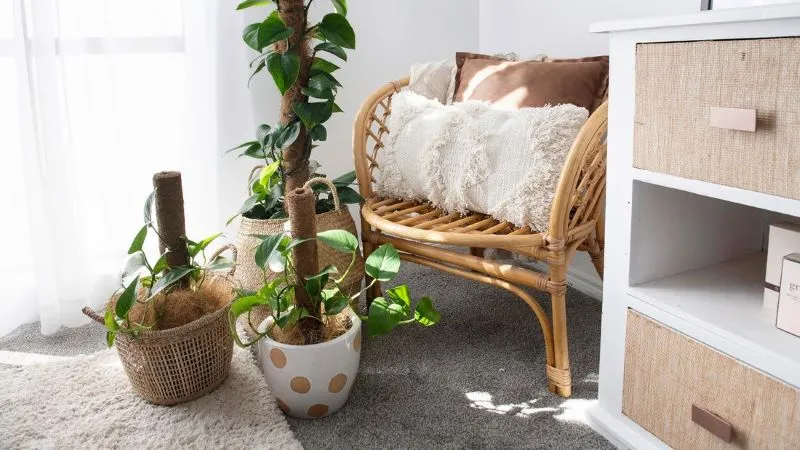
As an indoor plant, its needs are simple. It manages in almost any light conditions, needs infrequent watering and generally just gets on with things. It will appreciate a feed with liquid fertiliser once per month in spring and summer.Devil’s ivy care is pretty straightforward. It takes the name devil’s ivy simply because it’s hard to kill and is actually an invasive species if grown outdoors in many regions. While that’s bad for people battling it outside, it’s actually good for a houseplant – it means even if you’re a beginner, it’s hard to kill it!
- Light - An excellent beginner plant, it’s not fussy at all and can thrive in both bright sunlight or dim lighting inside your home. The only lighting conditions it can’t tolerate are full, direct sun and complete darkness. If exposed to bright, filtered light, your devil’s ivy will have more yellow variegation in its leaves.
- Water - The root system of pothos plants is rather shallow, so you only need to water a little bit to penetrate the roots. Water it as often as needed during the growing months of spring and summer. Just avoid soaking the soil completely and you should be fine.
- Soil - As far as soil goes, a standard houseplant potting mix is perfectly fine. It should be well-draining, but hold on to enough water to remain moist in between watering (devil’s ivy doesn’t like super dry soil).
- Repotting - Pothos does well in a smaller pot, so feel free to keep it in the pot you buy it in for quite some time. I have had mine in a 6″ pot I bought at the nursery for over half a year and it’s doing just fine! However, you can repot it if you want more vigorous growth. Just add extra soil and pick a pot 1-3″ larger than the existing pot. You don’t need to be extremely careful when repotting because the plant is so hardy.
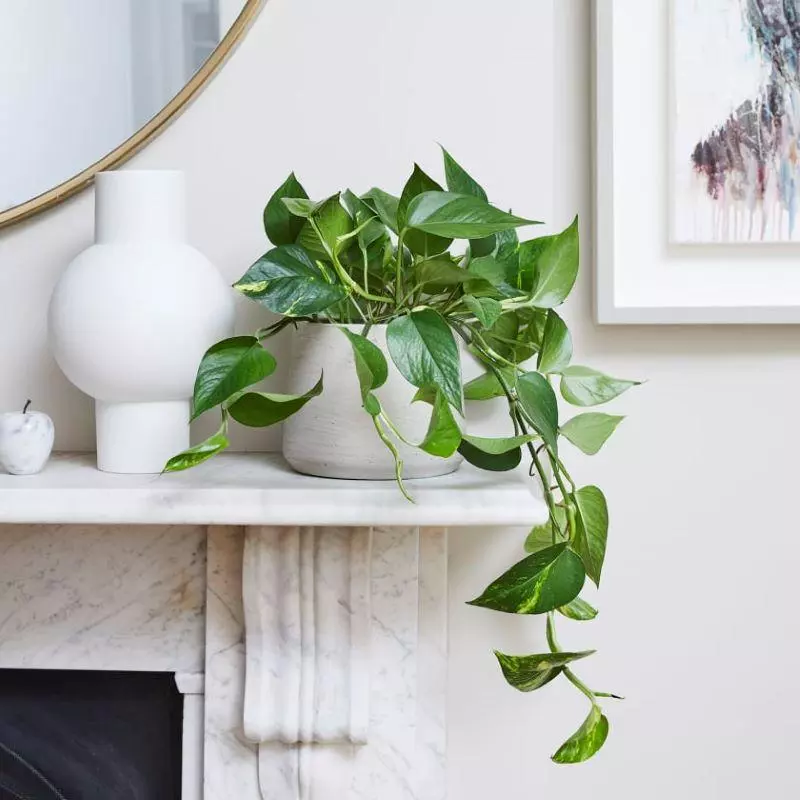
Pothos is a great plant whether you’re a beginner or an avid plant keeper.The varieties of the species and their leaf variegation offer unusual foliage in the home, with some varieties being sought after. New varieties are being cultivated by growers which keeps the species interesting. The wide range of plants available in this species means it is a great plant to ‘collect’. Looking after Pothos is easy and they are very robust as a houseplant. This makes them very affordable. They’re relatively quick to grow, and larger examples of the plant are readily available for instant impact in any room of the home.
Lilyturf
Lilyturf is a fairly easy plant to grow successfully indoors when planted in a general-purpose potting mix and given a fair amount of light. While the plant tolerates a fair amount of shade when planted outdoors, make sure lilyturf gets good indirect light when grown indoors.The pot and soil mix needs to be well-draining; these plants are susceptible to root rot if the roots soak in water. The plant's rhizomatous roots will spread fairly slowly, requiring repotting every three or four years, but lilyturf is a fairly low-maintenance specimen as an indoor plant.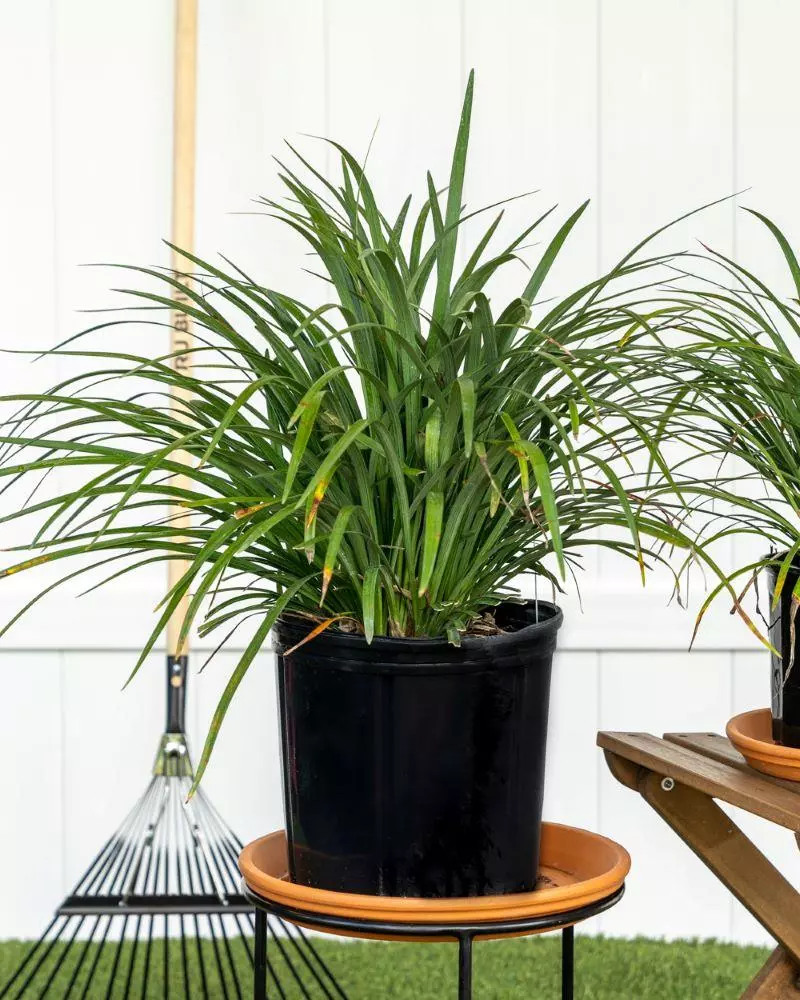
For plants that are grown indoors year-round, flowering may be reduced or entirely absent, but if the plant is moved outdoors to a sunny patio or deck for the warmer months, you can expect the typical late summer bloom period.
- Light - Lilyturf prefers the bright light of direct sunlight, but it can also grow in the less-than-perfect light of an indoor room. It will, however, need some bright indirect light to avoid getting limp and shaggy. Potted plants will greatly appreciate being given a sunny outdoor vacation during the summer months. Be aware that the variegated type is less tolerant of full sunlight.
- Soil - Liriope is not particular as to the soil type. For potted plants, any high-quality potting soil will work well, provided drainage is adequate.
- Water - Provide ample and regular moisture throughout the growing season. In the winter, reduce the watering frequency slightly. Liriope is a sub-tropical plant that does slowdown in winter, but it does not require a dormant period. Brown leaf tips usually signify a lack of water.
- Temperature and Humidity - Lilyturf has a good tolerance for high temperature and humidity, and indoor plants may struggle a little over the winter if the room is too cold and dry. Regular misting during the dry winter months will prevent brown leaf tips.
Aloe Vera
Aloe Vera is also called the “Miracle plant”. There are good reasons for this. It’s renowned worldwide for having medicinal properties that rejuvenate, soothe and heal the human body. Aloe is a stemless succulent plant with thick and fleshy leaves with serrated margins. While it grows wild in several tropical climates, it also grows indoor successfully as a potted plant. It is relatively resistant to most insect pests. Which again means you don’t have to spend your time swatting away those pests from leaves and have a ready remedy at hand for those cuts, bruises and skin ailments!It requires a moderate level of care to ensure it doesn’t shrivel up with too much watering or burn out under too much sunlight.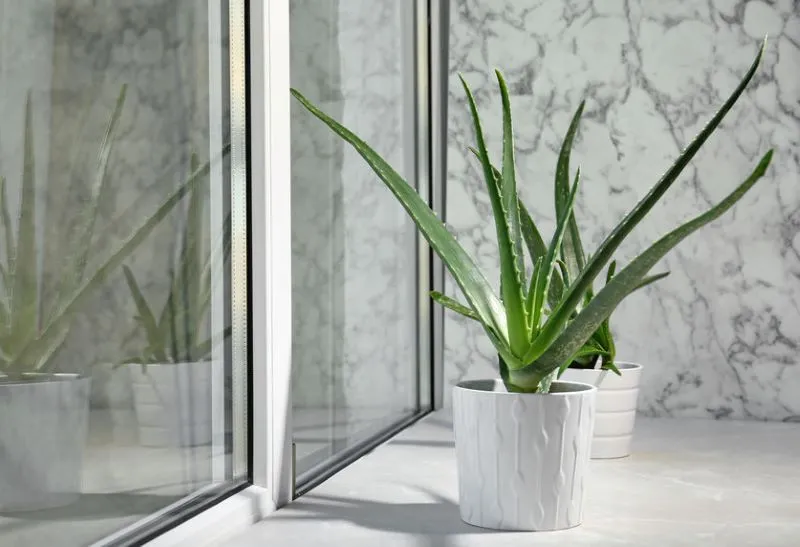
- Light: The plant requires bright, sunny conditions to grow well. It’s best if you place it under south or west facing windows.
- Soil: Aloe requires well-drained sandy potting soil to grow well. Experts recommend to use commercially available packages of “cacti and succulent mix” to ensure excess water drains out easily. To help this process along, it’s better to use terracotta pots to grow aloe since they are porous.
- Water: You need to bear in mind that since Aloe is a succulent plant like cacti, it does best under dry conditions. Aloe vera plants cannot tolerate standing water. Ensure that the pot is completely dry before you re-water.
Lucky bamboo plant
The plant having a name starting with the word“ Lucky” itself is a dead giveaway! You can find it everywhere in India; both at homes and at business places, since it is believed to bring happiness and prosperity in it’s wake.The plant grows upto 2-3 feet in height and comes highly recommended by Feng Shui practitioners as well; Lucky Bamboo requires a moderate level of care. One of the critical things you would need to bear in mind, is that Lucky bamboo plantsneed to be placed clean water all the time. Since the plant is susceptible to chemicals ; any traces of chlorine or fluoride in the water will end up affecting the leaves and turning them yellow or brown.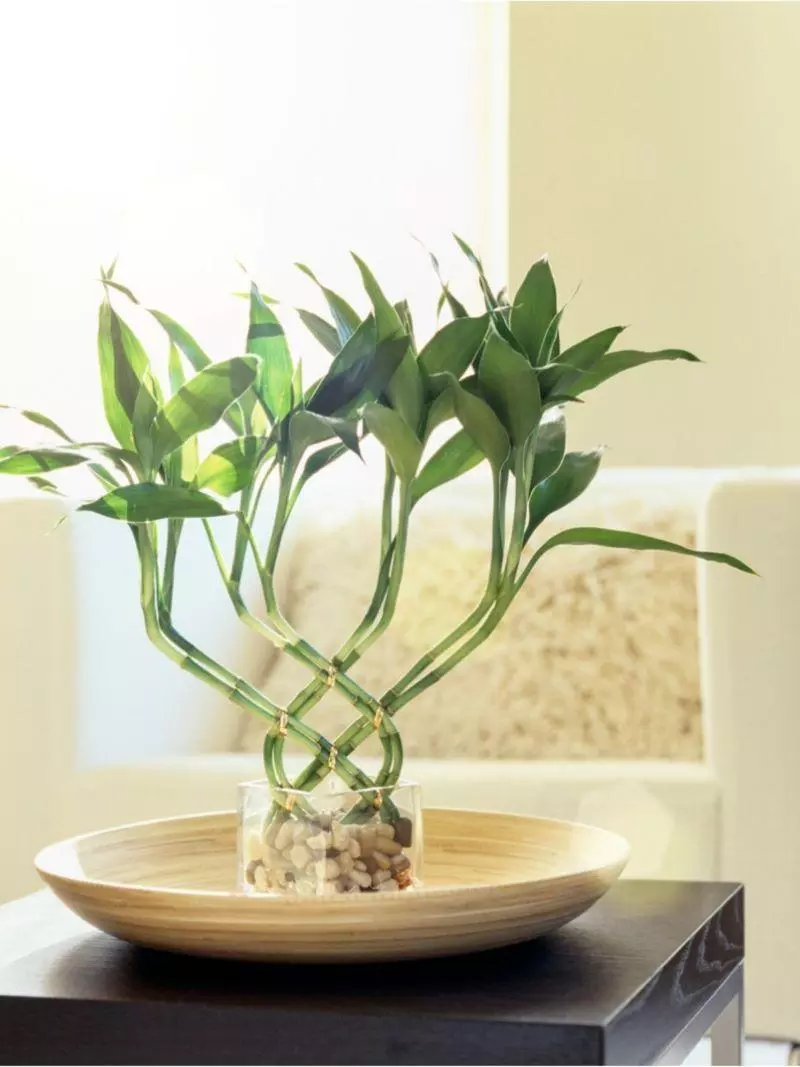
- Light: As it cannot grow under direct sunlight, place it by a window for the plant to receive indirect sunlight.
- Soil: Use well drained, rich potting soil.
- Water: Water should be changed once in every 2 weeks. Also remember, the plant needs to stay moist but not soaking at all times.
Snake Plant
“Mother in law’s Tongue” as it’s commonly referred to, makes for an ideal indoor plant for several reasons. It’s ornamental value adds a dash of beauty to your house. Snake plant requires minimal care and to top it all, has superior air purification qualities. It removes four out of five toxins and is counted among one of the few plants that also remove carbon dioxide at night.In other words, it continues to clean the air in your house, even as you catch up on beauty sleep at night! Snake plants are easy to maintain.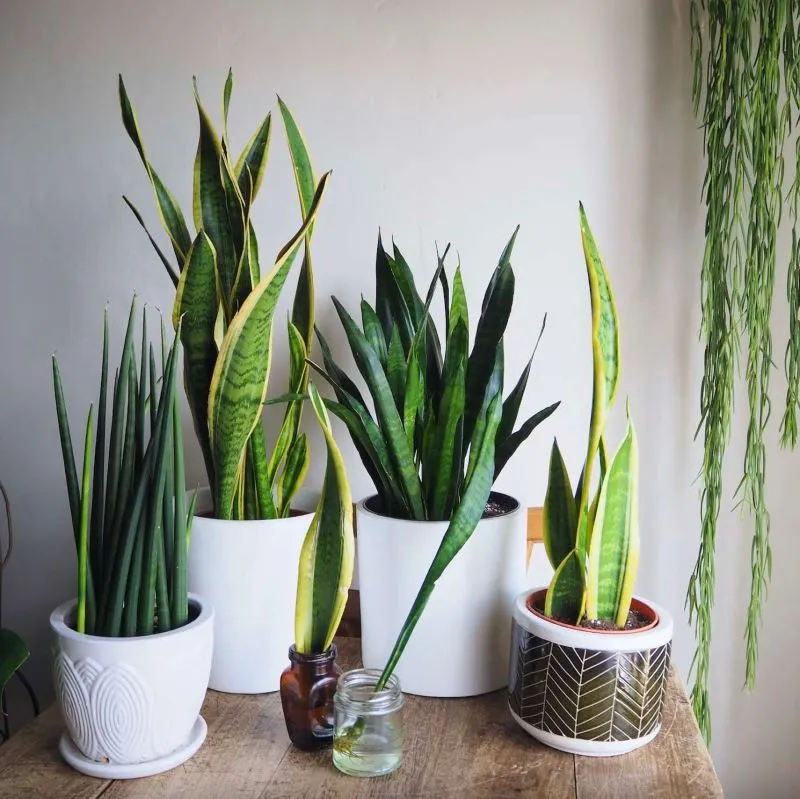
- Light: Flourishes both under bright and low sunlight.
- Soil: Can survive dry, poor soil conditions
- Water: Take care not to over water as their roots are prone to rotting. In winter, water it only once in several months.
Money Plant
If only plants bore money as gifts on their leaves! But since they do not, why not go for a plant where you can stretch your imagination a bit and visualize that the round, plump, flat leaves actually look like coins! It doesn’t harm the cause, that the plant is attractively leafy, requires little care, and efficiently removes indoor pollutants like formaldehyde and benzene. Of course, the commonly held belief that while the plant thrives in your house, you will run neither short of money or friends definitely argues in its favor as well! Place the plant away from drafts of wind since it can lead to leaf loss. Since it thrives in humidity, you could consider placing it in a bright, steamy bathroom.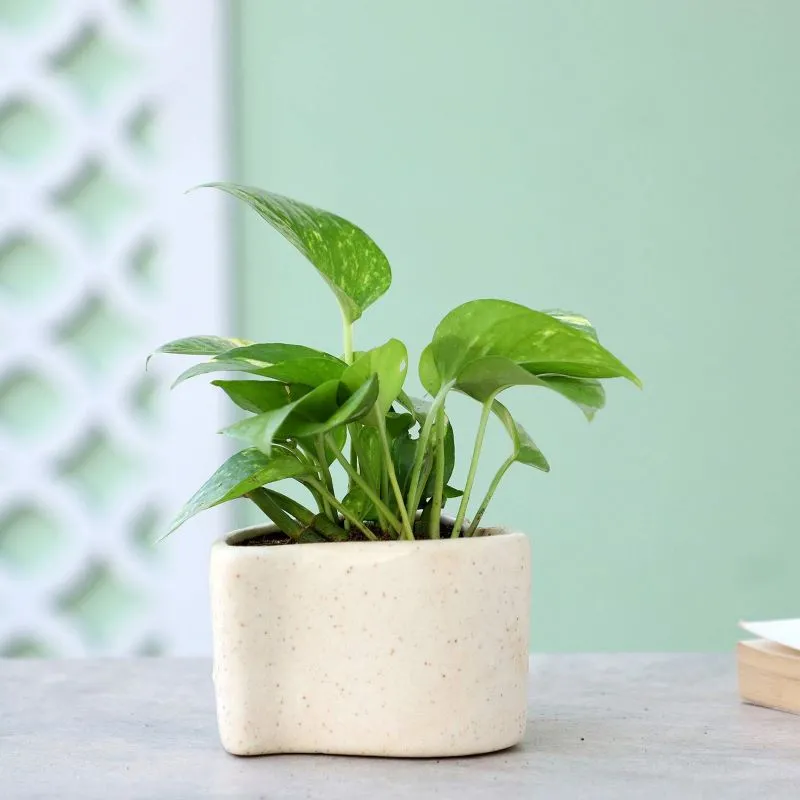
- Light: Try to avoid direct sunlight, since the leaves can get scorched. Instead go for low light
- Soil:Since root rot sets in easily, ensure that you pick a sandy, peat moss based soil that also allows for good drainage of water.
- Water: Whichever kind of environment you live in, you don’t need to water this plant more than once a week
Baby Rubber plant
Baby Rubber Plants serve as great decorative plants indoors and add a lot of aesthetic value to your home. Growing them is not as difficult as it seems. Though they can grow into full-length trees if kept in your gardens, they are easy to tend to indoors as well. It is better to get them while they are still small, to help them adapt to your home conditions. Keeping them in small pots restricts their growth as their roots do not have too much space to spread, thus making them ideal houseplants.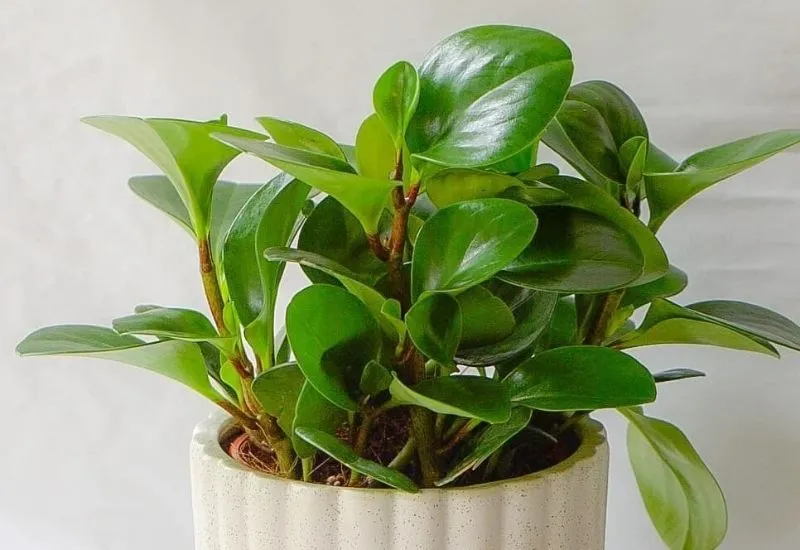
Croton
Croton with its bright yellow, orange, red, and even black foliage spruce it up for you. You could always grow the plant in a colorful pot to add to the charm!Be careful not to overwater the plants plus having a humidifier handy would help.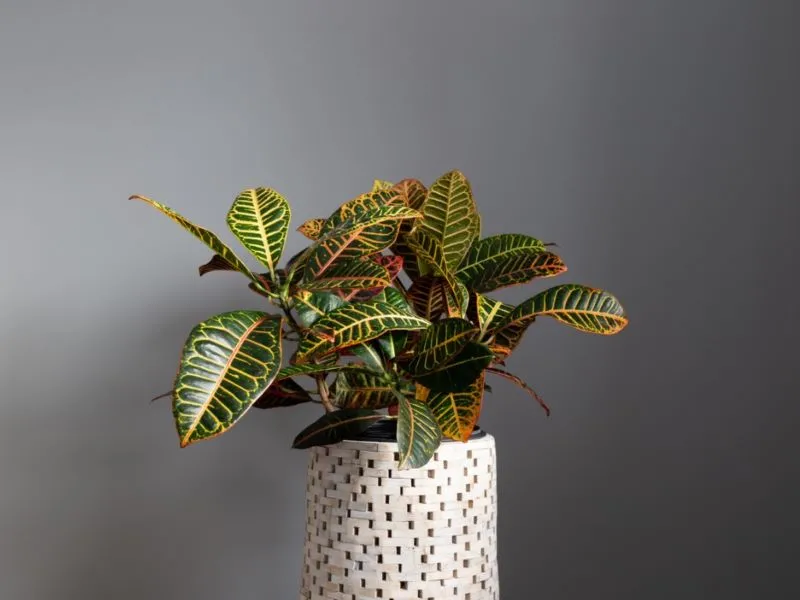
- Light: Place it under an east or west facing window where there’s bright light to let those leaves develop those rich, deep hues.
- Soil: Since the plant require rich soil that drains well to thrive, make sure its well fed with organic compost and peat moss.
- Water: Water only when the soil feels dry to touch
Indian Basil
It’s been grown in India from as far back as 5,000 years. No wonder then, that Indians harbor a deep cultural and religious attachment with the plant from time immemorial. In fact, in the Ayurvedic approach to medicine, it has been revered for its medicinal properties in curing several diseases; dried leaves have also been used as mosquito repellents for centuries.On the other hand, Italian & southeast Asian cuisines extensively utilise basil as a culinary herb to add flavour to dishes! Pinch the tops of the plant and nip the flower buds to help the plant to grow bushier. Also ensure to keep an eye out to pluck wilted or old leaves.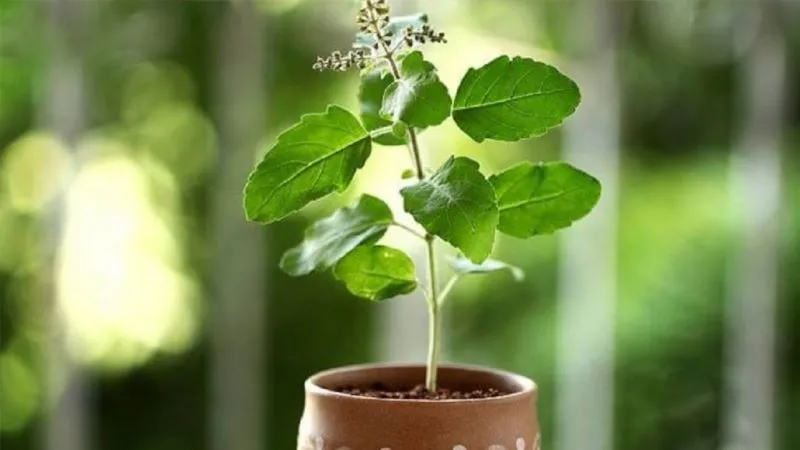
- Light: Since the plant thrives in sunlight, you could place it under the sun for at least 4 hours each day.
- Soil: The plant needs to be grown in fertile soil with a ph. level of around 6-7.5.
- Water: You would need to water the plant when the top soil feels dry; avoid watering during monsoons and sparingly in winters.


